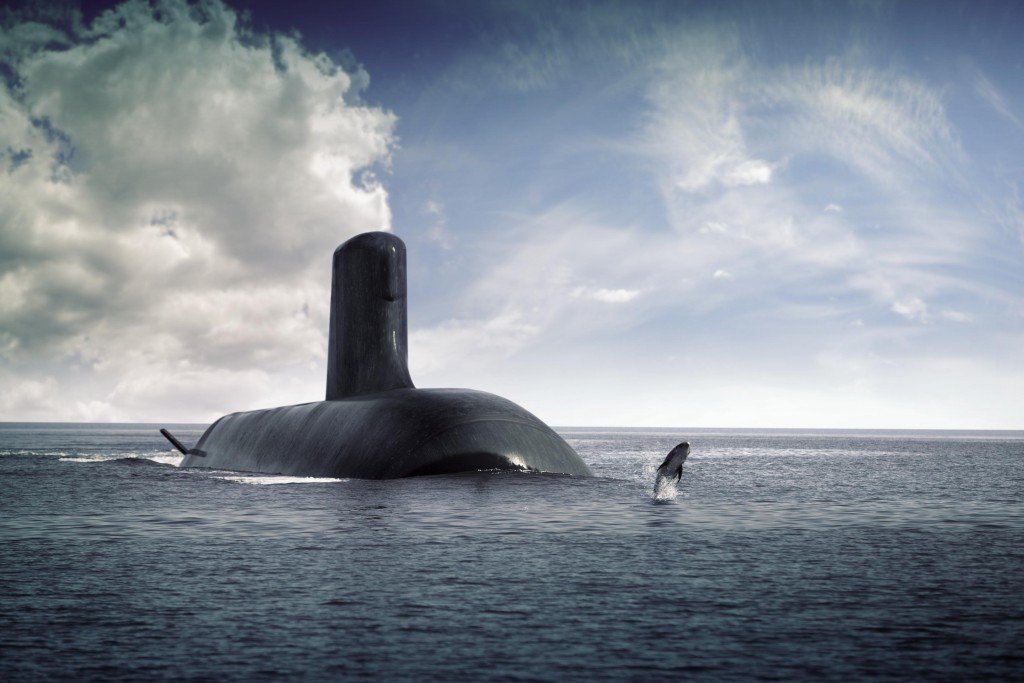 Editor’s note: The Strategist has invited all three SEA 1000 contenders to explain their approach to meeting Australia’s future submarine requirement.
Editor’s note: The Strategist has invited all three SEA 1000 contenders to explain their approach to meeting Australia’s future submarine requirement.
A common misunderstanding about the conventionally powered Shortfin Barracuda Block 1A is that is somehow “converted” from the nuclear powered French Barracuda. This characterisation is inaccurate. In fact the conventional ship uses the nuclear ship as its design reference.
As a new design for Australia’s specific requirement, the first design activity DCNS conducted was to size the ship. Based on what Australia needs the submarine to do, a calculation is performed to determine the necessary volume and weight required – how much submarine do we need? The answer to this question is found using specific programs within DCNS, and displacement is determined.
From this volume the naval architect then asks the next question – does an existing design approach the estimated displacement? If the answer is ‘yes’, this existing design becomes the reference for the new ship. If the answer is ‘no’, then a completely new design is required. In this situation one design loop will be insufficient and the design agency faces many years of risk reduction activity.
This threshold question is very important to understand and it is possible for different design agencies to answer this question differently, depending on the magnitude of the design loop in question. Design agencies will call on all their background tools, technologies, experience and know-how before answering one way or another. However, in the case of DCNS a clear and positive decision was made that the French Navy’s Barracuda would provide a very suitable design reference for the Shortfin Barracuda.
The data that enabled the selection of the Barracuda as the Australian design reference included such things hull diameter, length and steel, existing hydrodynamic studies of manoeuvrability, drag and acoustic performances and the suitability of main systems including, ship control, electrical, hydraulic, sonar, sensors, habitability, weapons storage, cooling, and ancillary platform systems. In each of these major systems the existing system design of the French Barracuda is used for the Shortfin Barracuda and from these known references an interpolation is performed for the new system design.
DCNS has high confidence in the performance of the design as the Shortfin Barracuda is within the envelope of the nuclear design. Where the nuclear design’s systems are not transferable the next most applicable systems are chosen. The main area where Barracuda design references were not used was in the area of the electrical system (batteries and voltage), power generation (induction and diesel generators) and propulsion (main electric motor). In these systems the design reference comes from the Scorpene class of diesel electric submarines, or from an existing submarine technology within DCNS. Existing technologies are re-used in all systems in the Shortfin Barracuda Block 1A. System by system, the whole ship performance is validated and the design loop closed.
The selection of the nuclear Barracuda as the design reference for the Shortfin also enabled DCNS to meet requirements in addition to range and endurance. The Australian requirements for warm water operations and very low acoustic signatures are good examples. As the nuclear Barracuda is designed to operate globally, shares the same hull form as the Shortfin Barracuda and is also compliant with nuclear safety standards, it is very suitable for the Australian requirement. This avoids many years of design studies for validation of equipment such as pumps and hoses, and allows the designer to take margins for higher performances elsewhere in the ship.
Acoustic performance is driven by three related factors of onboard equipment: silencing, reduction in the noise of the propeller and the overall hydrodynamic performance of the hull while manoeuvring. For the Australian requirement the nuclear Barracuda is again the closest design reference and all the relevant ship systems are reused. The challenge for any attack submarine is to maintain a nearly silent acoustic signature at a speed necessary to manoeuvre within weapons range of the target. The nuclear Barracuda is designed to reduce radiated noise when operating at a speed sufficient in order to close a threat submarine undetected. Of particular importance is the pump-jet propulsor, which combines a rotor and stator within a duct to significantly reduce the level of radiated noise through the effects of wake harmonisation and avoidance of cavitation.
One other myth worth debunking is that designers of nuclear submarines do not have to manage the power consumption of on board equipment as electricity from the reactor is “unlimited”. In large attack submarines, such as the French and proposed Australian Barracuda, the power consumption of the hotel load (the electricity needed to power the combat system and maintain the life support of the crew) is more than that of the propulsion system at the most frequently used speeds. In the case of nuclear submarines, the very high cost and significant weight of the reactor, as well as the safety requirement to operate on batteries without the reactor online, drives the architect to minimise the consumption of the hotel load to the lowest realisable level. In the case of a conventional submarine the preservation of energy in the main storage battery drives the same system design.
In summary, the description of the design process and choices made in the development of the Shortfin Barracuda Block 1A show that one submarine is not converted to another. Rather, a design reference is selected and an iteration of a new design is developed to meet the requirement with interpolation of known data and the re-use of proven technologies.

